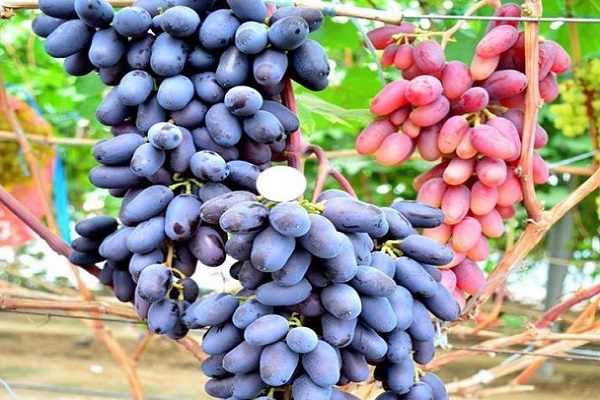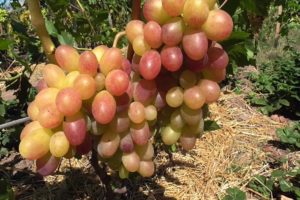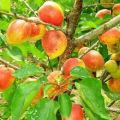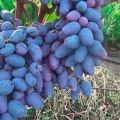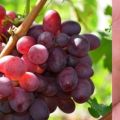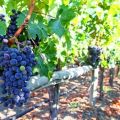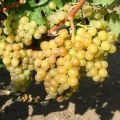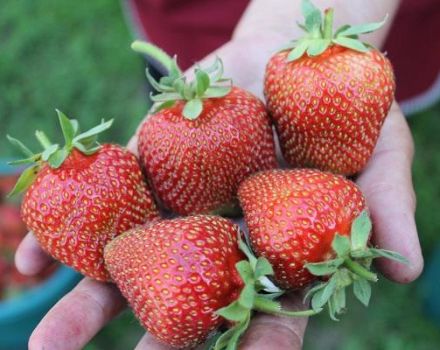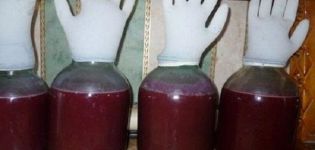Description and characteristics of the grape variety Akademik (Memory of Dzheneyev), cultivation features and history
Not all summer residents know about Akademik grapes. This is a new table variety with improved characteristics. But those who dared to plant it did not fail: the menu was supplemented with delicious berries.
Gardeners prefer to grow technical and table varieties. The former are used to make homemade drinks. The second is for fresh consumption. Grapes Akademik at the end of the season are guaranteed to delight with beautiful and sweet fruits.
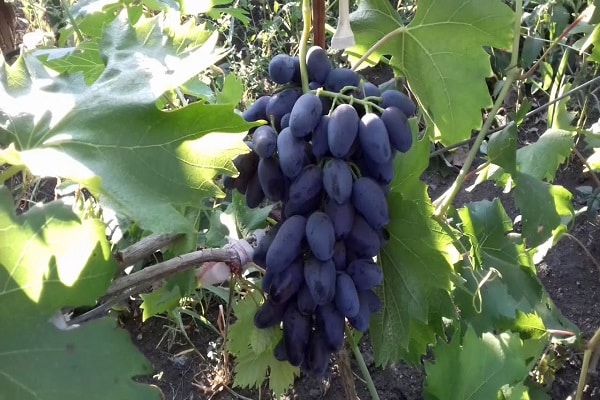
Breeding history
This is a new variety. It was created by breeders of the Crimean nursery Magarach. The scientists took as a basis the varieties: Gift of the Volga region and Richelieu. Academician (Avidzba) has successfully passed the tests. The plant has an additional name - In memory of Dzeneev.
But ordinary summer residents do not always manage to acquire original seedlings: Magarach does not conduct a free sale. Gardeners obtain planting material for the occasion: from friends or at seasonal fairs.
Academician grapes are so successful that already in 2014 it was entered into the State Register of Breeding Achievements.
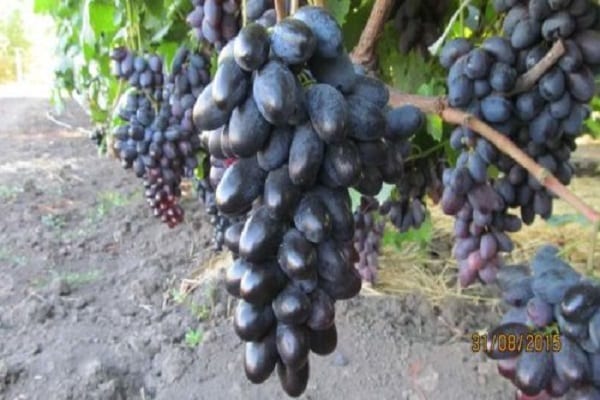
Description of the variety
Academician Avidzba does not require pollinating plants. He himself can serve as a source of pollen for self-fertile varieties. Description of the variety:
- early ripening variety (115 days from the awakening of the vine to harvest);
- vigorous bush;
- the vine is dense;
- five-lobed leaf, slightly pubescent below;
- the leaf is bright green, large;
- frost resistance of the vine up to -25 degrees (the bush hibernates without shelter);
- brushes of medium density, heavy (up to 1.8 kg);
- the shape of the brushes is oval or cylindrical;
- the bark of a mature vine is light brown.
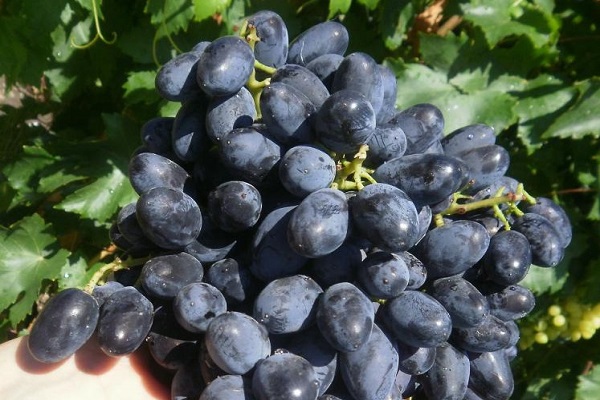
Dzheneyev's memory grapes have advantages over similar table varieties: frost resistance, excellent fruit taste.
Academician berries have improved characteristics:
- the fruits are dark blue with a pronounced waxy bloom;
- an elongated berry with a blunt tip;
- grape size - 35 mm x 20 mm;
- sweet taste with hints of nutmeg, cherry and chocolate aftertaste;
- the skin is dense.
Berries can withstand long-term transportation without losing marketability.
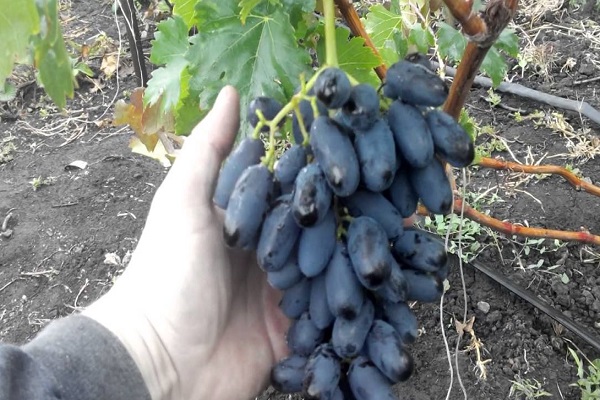
What are the advantages of the variety
Academician Avidzba received all the best from his parents:
- frost resistance of vines up to -25 degrees Celsius (makes it possible to winter without shelter under the snow);
- unusual taste of berries (tasting score 9.8 out of 10 points);
- high rates of transportability and marketability;
- strong vine growth;
- fruit resistance to damage by wasps and birds.
The academician is still being tested. According to preliminary data, it will be recommended for growing on an industrial scale. There is a place for him in private vineyards too.
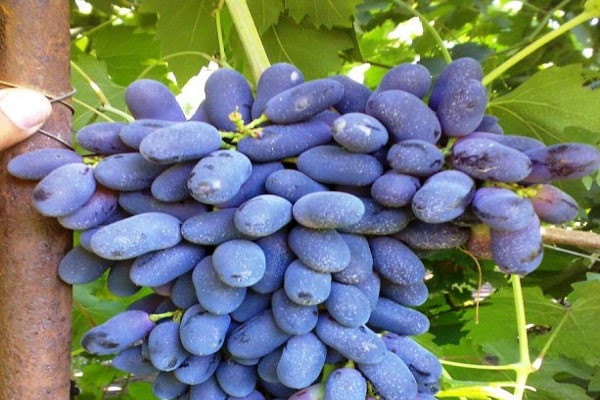
Choosing a place and seedlings for planting
Academician (Avidzba) gives a high yield when planted with high-quality seedlings. It is imperative to choose the right place for placement. It is recommended to follow the rules:
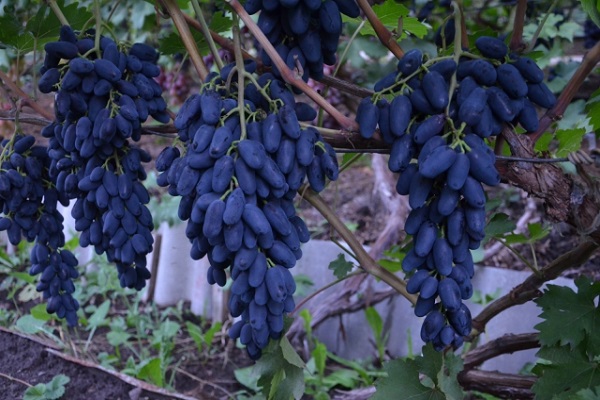
- Healthy rooted cuttings are suitable for planting. The root system, underground and above-ground parts must be well developed. The material should be purchased only in certified centers. When buying, it will be useful to familiarize yourself with the documents for the goods.
- You can use a grape variety with increased winter hardiness as a rootstock. But you should know: there are no data on the reproduction of the Academician by grafting cuttings.
- When propagated by cuttings, the scion receives all diseases of the rootstock. They will definitely appear.
- A healthy stalk of the Academician is taken for the scion. It is recommended to inoculate in any convenient way (in splitting, in an invoice).
- The place for planting rooted cuttings should be sunny, protected from north and north-east winds. The grapes should be planted near the southern and southwestern walls of summer cottages. It is recommended to take into account the size of the bush: it is required to retreat from the walls 2.5-3 m.
- The grower should take care of the support for the vine in advance. The plant overloads itself with fruits. Untied stems break, the crop is lost.
- The depth of the groundwater at the site is 3-4 m. The grapes cannot stand waterlogging of the soil. To prevent wetting and decay of the root system, drainage is required before planting. To do this, it is necessary to grind crushed stone, brick, tiles and pour a layer of 7-10 cm on the bottom of the planting pit. This simple measure will prevent stagnation of water at the roots.
- The variety prefers fertile, friable soils with a neutral or slightly alkaline reaction. It is recommended to deacidify acidic ones by adding lime (1 liter per square meter). To obtain a permeable soil, add perlite, neutral peat, sand.
- Academician rooted well when planted in early spring or mid-autumn. To do this, use a piece of vine with 3-4 eyes. The upper cut is made horizontal. It is recommended to fill it with paraffin or wax. The bottom cut is made at a 45 degree angle. It is dipped in any root stimulant. The stalk is stuck into the moistened soil at an angle and placed in a greenhouse. After 30-45 days, the vine will take root.
Grape Akademik has vigorous bushes. When planting several plants, intervals of 2-3 m should be made.

How to plant correctly
When planting grapes, the sum of active temperatures should be taken into account. To obtain a stable yield, it must be increased to the recommended value.
The academician bears fruit when the sum of active temperatures is above 2100 degrees. The calculation is based on the average daily temperatures. For grapes, the active air temperature is +10 degrees and above. Development and growth stop below.
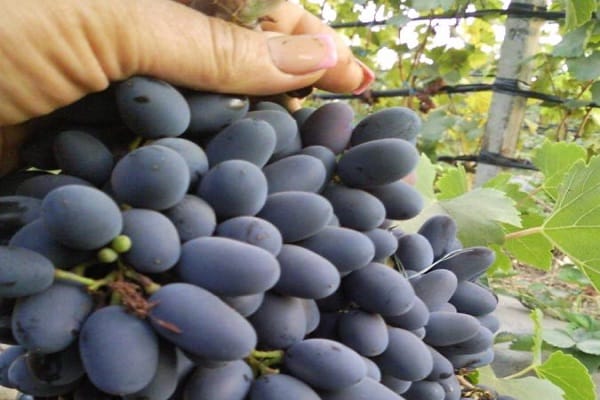
The average daily temperatures are above +10 degrees Celsius. This indicator (2100) is typical for the southern regions. But in the northern regions, winegrowers resort to tricks:
- to preserve heat, bushes are planted on the southern side of the buildings;
- install reflective screens made of foil or metal;
- mulch the soil with a dark non-woven material;
- stones are laid around the trunk circle (during the day they heat up, at night they give off heat);
- a protective cover made of transparent plastic or film is placed around the bush.
Planting according to such simple rules will allow you to get a harvest under adverse weather conditions.

Care advice
Academician is a new variety. To obtain a harvest, you must clearly follow the recommendations:
- The academician demands soil moisture.Watering should be done during flowering and ovary formation. It is recommended to stop watering during the ripening period: excessive soil moisture leads to a loss of taste.
- It is recommended to combine watering with top dressing. In the spring, nitrogen fertilizers should be applied. In spring and autumn - mineral complexes.
- The variety is vigorous. It needs to be trimmed to evenly brighten maturing brushes. It is imperative to carry out stripping and pinching during the ripening period of berries.
- Preparation for winter is impossible without formative pruning. Remove all immature vines (they are green). Then leave the replacement shoot (2 eyes) and above it the fruiting vine (6-7 eyes). Up to 6 of these segments must be left on the main vine.

Akademik grapes winters well without shelter. But the bush should be completely covered with snow. To protect the root system, it is recommended to mulch the trunk circle with sawdust with a layer of 15 cm.
Disease and pest resistance
The academician is amazed by oidium and mildew. For protection, it is recommended to do chemical treatments.
The variety has a dense skin with a waxy coating. Fruits are slightly damaged by wasps and birds.
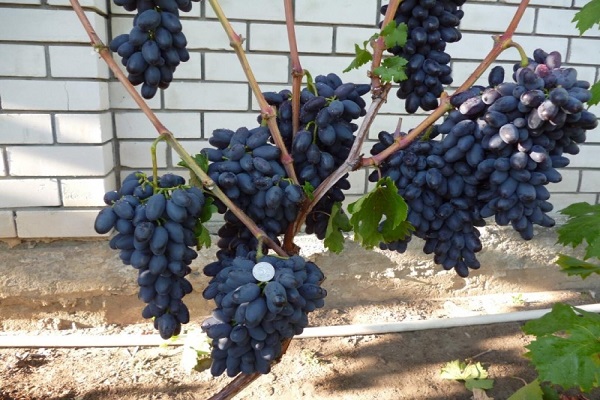
The best regions to grow
The state register recommends cultivating the Akademik (Avidzba) variety in the North Caucasian District. But the technical characteristics make it possible to receive fruits further north. It all depends on the desire and skills of the grower.
